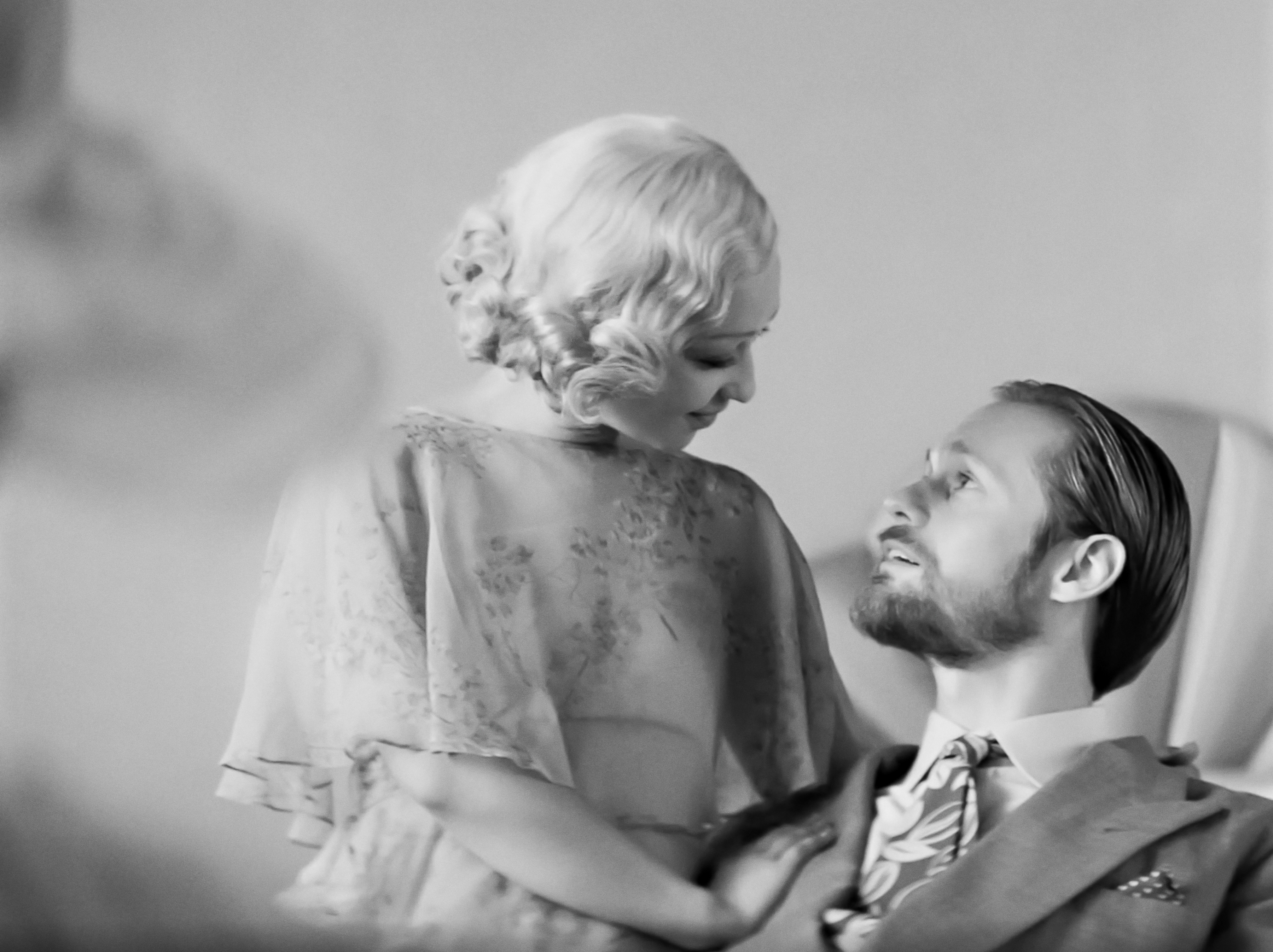Tessa Thompson and Ruth Negga grapple with race and perception in the melodramatic Passing
Rebecca Hall’s adaptation of the Nella Larsen novel hits Netflix next month

It’s still kind of amazing that, in the early 20th century, mixed-race, light-skinned Black women could often get away with being seen (or “passing”) as white. The late novelist Nella Larsen knew a thing or two about that—her father was Afro-Caribbean, her mother Danish—and the only books she wrote, 1928’s Quicksand and 1929’s Passing, extensively dealt with the subject.
Pale-faced actress Rebecca Hall (whose mother is biracial) has now taken it upon herself to both write and direct an adaptation of the latter book, which will hit theaters for a couple weeks before permanently landing a spot on Netflix. And she’s secured two of Hollywood’s most acclaimed, light-skinned ladies, Tessa Thompson and Ruth Negga, to star in the lead roles.
Thompson plays Irene, a Harlem socialite who has a nice family life with her doctor husband (Moonlight’s Andre Holland) and two boys. While shopping uptown, she runs into Clare (Negga), an old childhood friend. Irene finds out that her ol’ chum is living her life as a full-fledged white woman, married to a casually racist white dude (Alexander Skarsgård, of course!) who has no idea his wife is a sista.
As much as Irene would like to forget the awkward run-in, the lonely Clare slips back into her life, visiting Irene (or “Reenie,” as Clare calls her) at her home and eventually accompanying her and her husband to swanky get-togethers in Harlem. At first, Irene welcomes her with open arms, especially when it seems her former friend wants to get some color back in her life. But jealousy eventually creeps in, as Clare wins over Irene’s family, friends, even her maid. Irene begins to quietly simmer with envy and contempt, as she once again finds herself competing with someone way lighter than her.
For her debut feature, Hall makes sure everything that’s captured on screen is appropriate with the times, right down to the black-and-white imagery, the 4:3 full-frame aspect ratio, and a melancholy, tickled-ivory jazz score from the experimental artist Devonté Hynes (a.k.a. Blood Orange). As for the story itself, it often moves with a moody, morbid vagueness that makes the film seem like a Gothic ghost story, except that everyone’s alive.
Thompson is all prim and proper fear and self-loathing as Irene, a woman who doesn’t want to deal with race… in 1920s Harlem! Even when one of her boys gets called the dreaded N-word, race and racism is something she’d prefer not to discuss—as opposed to her husband, who is all too ready to tell his sons about the latest lynching in the South. (Holland is all straight-shooter in this, playing his upper-class doctor as a man who’s fully aware he’s still a you-know-what to white folks.) Irene doesn’t even want to acknowledge that she herself could also pass for white; in the opening shopping scenes, the white people around her are surprisingly at ease. Negga winds up playing the more sympathetic character of the two, as Clare quietly reacquaints herself with her Blackness at every Harlem soirée she attends.
All of this makes Passing seem more like a maudlin melodrama than a study of Harlem Renaissance-era racial tension. Of course, the movie does acknowledge it was (and still is) an everyday struggle for anyone whose skin isn’t white—even for those pretending to be white. But since the story is more about Irene and her quiet, paranoid rivalry with Clare, the drama can be awkward and soapy. You also get the sense that Hall is a bit too sheepish to delve into the plusses and minuses of being a Black woman who could pass for white. In the end, Passing lacks the boldness of something like “Illusions,” the classic 1982 short from Daughters Of The Dust director Julie Dash, in which Lonette McKee infiltrates WWII–era Hollywood by passing as a white studio assistant.
Eventually, Passing reaches a tragic, very snowy climax for our heroines. It’s quite the perplexing finale for a movie that is, on a whole, mostly perplexing. You could say Hall is continuing in Larsen’s footsteps and showing how the lives of biracial people can often be plagued with confusion. Throughout her film, both Irene and Clare present themselves as women who often wonder if they’ve sided with the right tribe. As Passing not-so-subtly implies, even though it gives you lighter skin pigment (and less problematic hair), being mixed-race isn’t as exotic as it’s been made out to be.